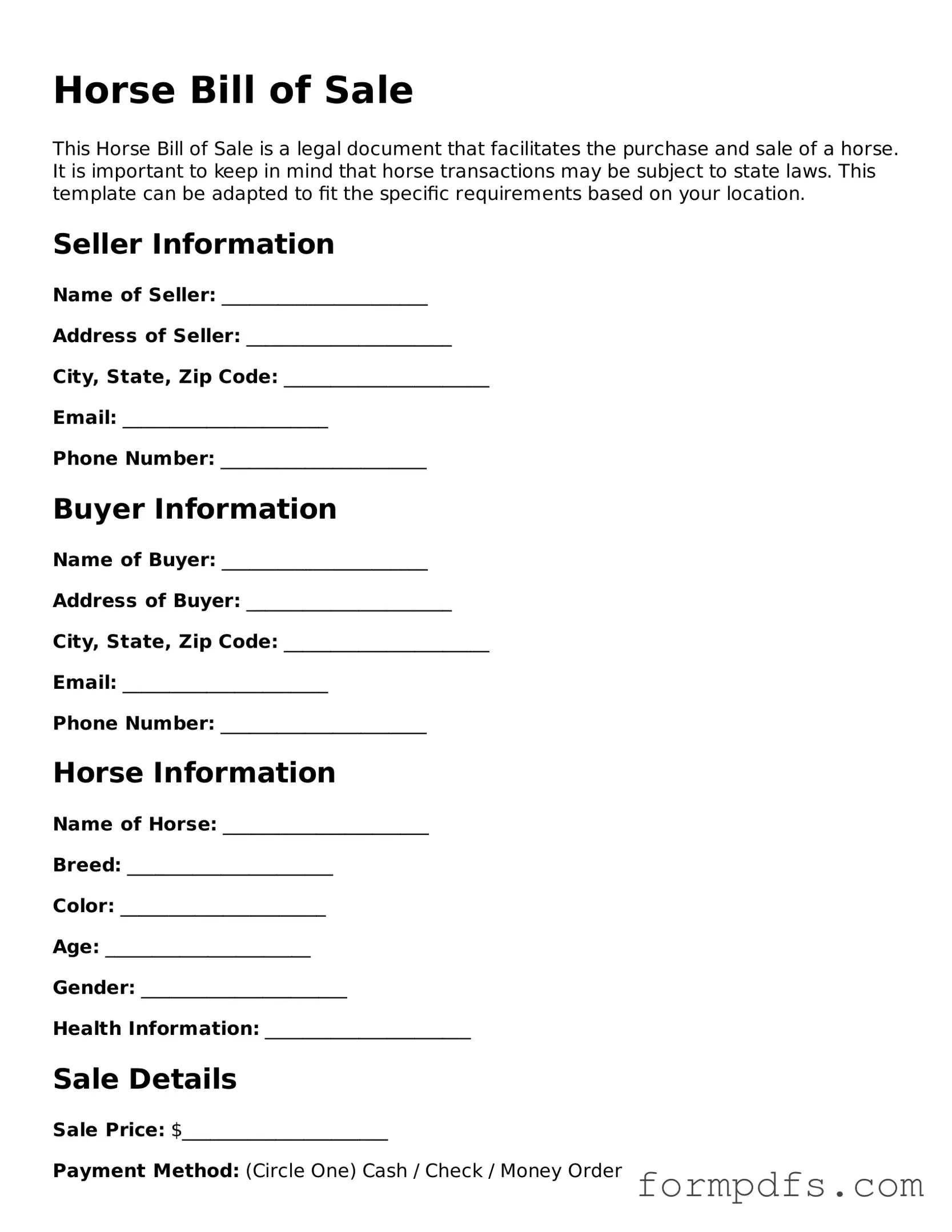What is a Horse Bill of Sale?
A Horse Bill of Sale is a legal document that records the transfer of ownership of a horse from one party to another. This document serves as proof of the sale and outlines important details such as the horse's description, the sale price, and the date of the transaction. It protects both the seller and the buyer by providing a clear record of the sale agreement.
Why do I need a Horse Bill of Sale?
Having a Horse Bill of Sale is essential for several reasons. It provides legal protection in case of disputes regarding ownership or the horse's condition at the time of sale. Additionally, it may be required by state law or for insurance purposes. This document can also help establish the horse's history, which is valuable for future buyers.
What information should be included in the Horse Bill of Sale?
The Horse Bill of Sale should include the following details: the names and addresses of both the seller and the buyer, a thorough description of the horse (including breed, age, color, and any identifying marks), the sale price, the date of the transaction, and any warranties or guarantees provided by the seller. It is also helpful to include any relevant health records or registration papers.
Is the Horse Bill of Sale required by law?
While not all states require a Horse Bill of Sale, having one is highly recommended. Some states may have specific regulations regarding the sale of livestock, including horses. It is wise to check your local laws to ensure compliance and to protect your interests during the sale.
Can I create my own Horse Bill of Sale?
Yes, you can create your own Horse Bill of Sale. However, it is important to ensure that it includes all necessary information and complies with your state’s laws. There are also templates available online that can guide you in drafting a comprehensive and legally sound document.
What if the horse has health issues?
If the horse has known health issues, it is crucial to disclose this information in the Horse Bill of Sale. Transparency helps prevent future disputes and establishes trust between the buyer and seller. You may also want to include any warranties or statements regarding the horse's health condition in the document.
Do I need witnesses or notarization for the Horse Bill of Sale?
While not always necessary, having witnesses sign the Horse Bill of Sale or having it notarized can add an extra layer of protection. This can be especially useful if disputes arise in the future. Check your state’s requirements to determine if notarization is recommended or required.
What should I do after completing the Horse Bill of Sale?
After completing the Horse Bill of Sale, both the seller and the buyer should keep a copy for their records. It is also a good idea to transfer any registration papers and health records to the new owner at the time of sale. This ensures a smooth transition and helps the new owner manage the horse's care effectively.
